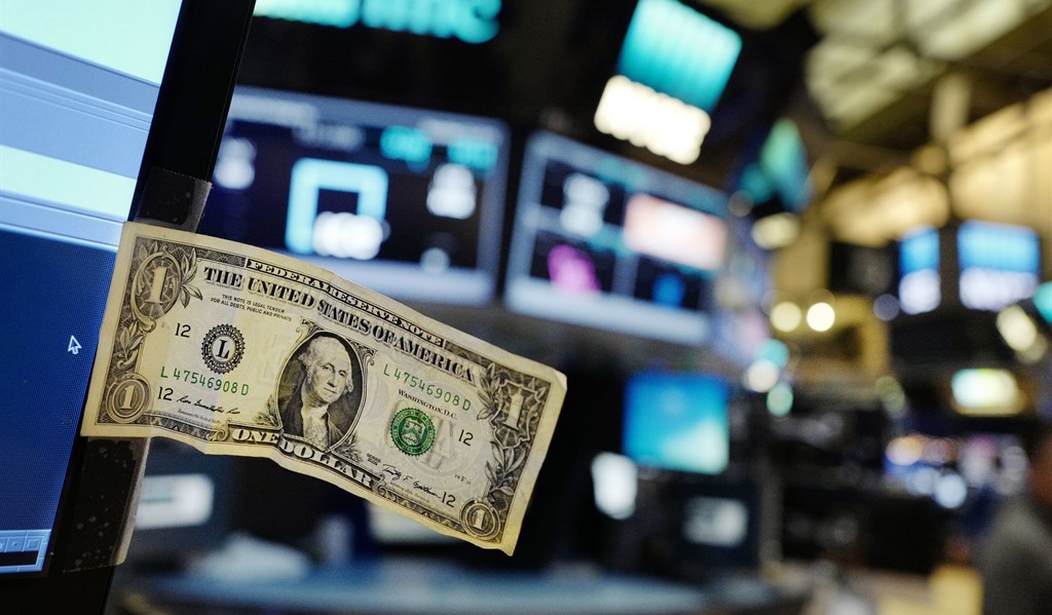Ever since the dollar was set loose from gold in 1971, we have seen a series of wide dollar swings down and up and down again, usually in swings lasting 7-8 years. The dollar fell from 1971 to 1978, rose from 1978 to 1985, fell until 1994, rose until 2001, fell until 2008, rose until 2016 and began falling in 2017.
Gold soared during the first and last times the dollar fell (in the 1970s and 2000s), while gold rose more moderately in the late 1980s, accompanied by a historically strong rare coin market. The rare coin market had two major bull markets in the 1970s and one in the 2000s. We could be on the verge of another long bear market in the U.S. dollar and another rare coin bull market. Last January 1, 2017, the U.S. Dollar Index peaked at 103. Last Friday, the U.S. Dollar Index (DXY) reached a two-year low at 90. If the dollar index indeed peaked a year ago at 103, we are just one year into what could be a 7-to-8 year dollar bear market, which could push gold above $2,000 this time around. We don’t know for sure, but if history is any guide, this could be an excellent time to buy gold, silver and the rare coins minted from those two precious metals.
Gold Starts Great in 2018
Gold is off to a great start in 2018, rising for five straight weeks and reaching a four-month high. Gold is now up by $100 in the five weeks since its $1,240 low on December 12, the day before the Federal Reserve announced its latest interest rate increase. One big reason is the dollar’s continued decline as the euro keeps rising, reaching $1.23 Monday, up from $1.06 a year ago. This makes gold cheaper and more affordable in Europe while pushing gold higher in U.S. dollar terms. We are also entering the Chinese “Lunar New Year” season, which prompts heavy gold buying in China. The Chinese New Year in 2018 falls on February 16, close to another traditional gold-buying holiday in the West – Valentine’s Day.
Recommended
2018 Gold Predictions Escalate After Gold’s Recent Rally
We don’t much believe in the value of mainstream gold price predictions – since they tend to follow the price of gold rather than anticipate any changes of direction – but we report what the mainstream banks are doing just that. It is like watching the traffic patterns on an ant hill.
Sure enough, with gold rising over the last five weeks, we see more mainstream banks pushing up their predictions for 2018. Last week, we reported on the “boring” predictions of year-end prices ranging from $1,275 to $1,320, with strangely precise predictions like $1,303 (Royal Bank of Canada) and $1,312.50 (ICBC Standard Bank). Last week, we heard much higher predictions from TD Securities, who said that gold could run up to $1,357 in the “not-too-distant future” or “a move toward $1,375” due to a weaker U.S. dollar and a possibility that the Fed might not raise interest rates as many times as once expected.
On Monday morning, January 15, while many American markets were closed for Martin Luther King, Jr. Day, Ole Hansen, the head of commodity strategy at Denmark’s Saxo Bank, said gold “is currently targeting the next area of resistance starting from $1,350 and going up to the September high at $1,357.”
New York-based money manager Michael Kramer, founder of Mott Capital Management, is even more bold, saying “Gold may be on the cusp of a significant technical breakout, one that could send the precious metal higher by as much 23 percent to $1,625.” Last Thursday, when gold was still trading at $1,320, he wrote, “The metal is building up a head of steam as it races toward a breakout at $1,350. Should that breakout occur, the price of gold could have a clear path to rise to $1,600.” He relies on technical chart patterns but also cites rising inflation, rising oil prices and a weakening U.S. dollar.
The Bank of China International sees gold reaching $1,400 by the fourth quarter, based on a weak dollar, plus a weaker U.S. stock and bond market, sending more investors into gold. “In a world of upbeat economic growth, dollar weakness, falling bond prices and elevated equity valuations, the commodities revival should come into full bloom,” said BCI analysts led by London-based Xiao Fu, the commercial bank’s head of commodity market strategy. This outlook was supported by a Bloomberg article last week saying that China may trim or halt its purchases of U.S. Treasuries. That prompted overnight selling in the Treasury bond market, sending the yield on the benchmark U.S. bonds to its highest levels in a year.

Mike Fuljenz is the Official Precious Metals Expert for Townhall Finance
























Join the conversation as a VIP Member